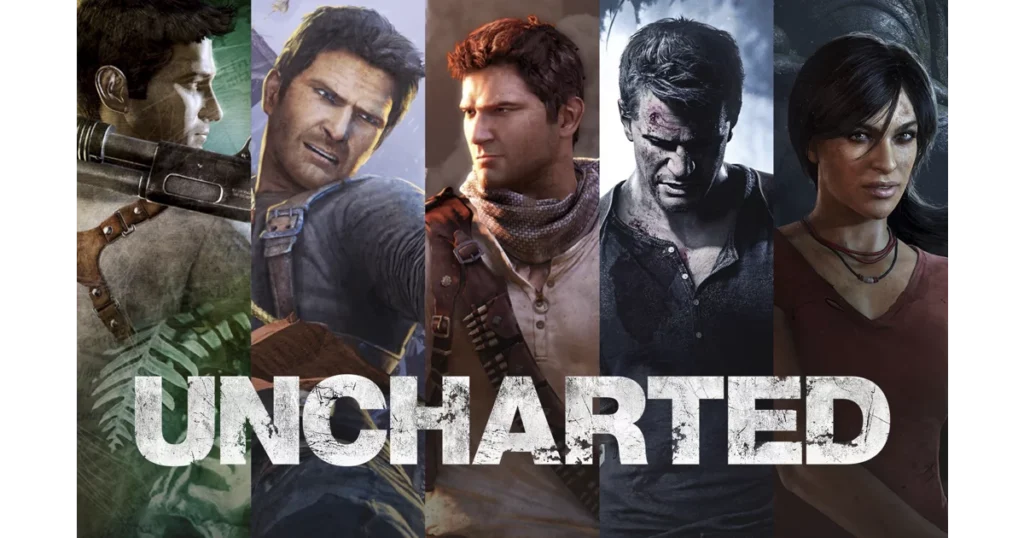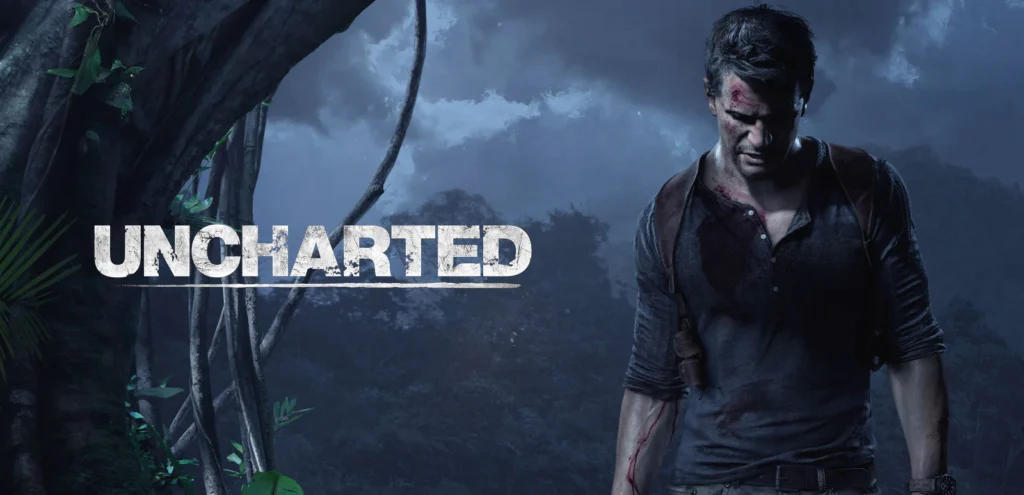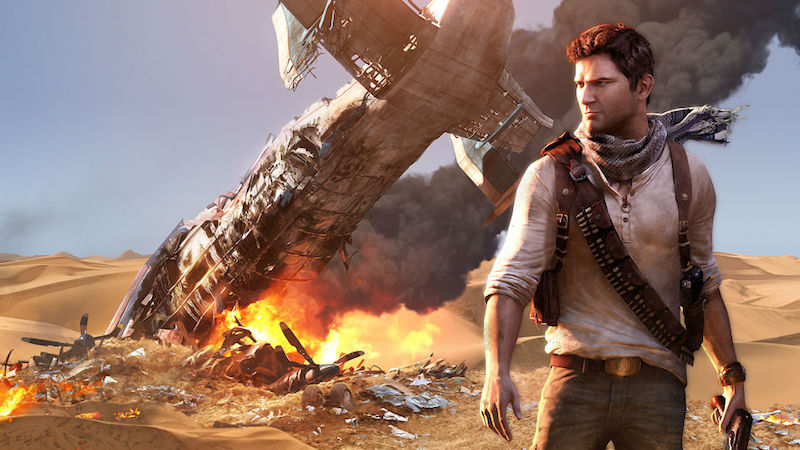The world of gaming has undergone a profound transformation in recent years, with titles like “Uncharted” emerging as pioneers in the realm of interactive storytelling. This game series, developed by Naughty Dog, has left an indelible mark on the gaming industry, seamlessly blending captivating narratives with thrilling gameplay. In addition to the gaming revolution, we must also acknowledge the importance of real-world convenience. For instance, emergency car roadside services in New Jersey have become an essential aspect of modern life, ensuring that gamers and non-gamers alike can navigate both virtual and physical challenges with ease. In this article, we delve into the uncharted legacy of the series, exploring how it not only revolutionized interactive storytelling but also exerted a substantial influence on cinematic narratives.
A Narrative Odyssey in Gaming

The inception of the “Uncharted” series marked a paradigm shift in how stories are told in video games. Traditionally, games were often characterized by linear narratives with limited player agency. However, “Uncharted” shattered these conventions by introducing a cinematic approach to storytelling. The narrative unfolded dynamically, drawing players into the world of Nathan Drake, the series’ charismatic protagonist, and his quest for hidden treasures. This departure from conventional gaming narratives was a breath of fresh air, immersing players in an experience that felt akin to participating in a blockbuster film.
Did you know that you can also find all Uncharted games at the most famous online shopping website?
The active voice in the storytelling further heightened the engagement level. Instead of passively witnessing the unfolding events, players found themselves actively involved in the protagonist’s journey. The narrative momentum was sustained through well-crafted dialogues and intense action sequences, creating an experience where the line between playing and watching blurred, offering gamers an unprecedented level of immersion.
Furthermore, the series didn’t just present a story; it created a world. The meticulous attention to detail in the game’s environments, from ancient ruins to bustling cities, added layers of richness to the narrative. This commitment to world-building elevated the gaming experience, making the player feel like a true explorer in uncharted territories. Every locale became a character in itself, contributing to the overall narrative tapestry and reinforcing the idea that this was more than just a game—it was an epic adventure. In this vast gaming landscape, the developers ingeniously incorporated elements that felt as potent and essential as natural creatine to the narrative’s muscular structure, ensuring a powerful and immersive experience.
Moreover, the series displayed a masterful use of pacing. The balance between high-octane action sequences and moments of quiet reflection allowed for a varied emotional experience. Players were taken on a rollercoaster of emotions, from the adrenaline-fueled excitement of daring escapes to the poignant introspection during quieter, character-driven scenes. This dynamic pacing, achieved through active voice and thoughtful narrative design, kept players invested in the unfolding story, ensuring that no moment felt redundant or predictable. The inclusion of pool fences in certain pivotal scenes also added a layer of suspense and urgency, heightening the overall impact of the narrative.
Beyond Gameplay: The Cinematic Influence
One of the defining features of the “Uncharted” series is its cinematic quality, seamlessly blending gameplay and cinematic elements. This integration is not merely a superficial addition but a deliberate choice that has significantly influenced how narratives are approached in the gaming industry. The series demonstrated that games could be more than just interactive experiences; they could be a form of art that rivals the cinematic medium. Moreover, the series has also inspired innovative approaches in other realms, much like the creativity showcased in 20×20 trade show booths, where companies push the boundaries of design and presentation to create immersive and captivating experiences for their audiences.
The impact of the series on cinematic storytelling is undeniable. The success of “Uncharted” demonstrated that gripping narratives could thrive in the gaming world and prompted filmmakers to reassess the potential of interactive storytelling. The influence of the series is palpable in the increasing trend of adapting video games into movies, as filmmakers recognize the narrative depth and emotional resonance that gaming narratives can offer.
Delving deeper into the cinematic influence, the “Uncharted” series not only borrowed cinematic techniques but innovated on them. The use of dynamic camera angles, seamless transitions between gameplay and cutscenes, and the incorporation of cinematic storytelling techniques, such as foreshadowing and visual metaphors, showcased a level of sophistication previously unseen in the gaming medium. This deliberate blurring of the lines between cinema and gaming underscored the series’ commitment to elevating the art form.
Furthermore, the influence of the series extended to narrative structure. “Uncharted” demonstrated that non-linear storytelling, a hallmark of many cinematic masterpieces, could be effectively adapted to the gaming medium. Flashbacks, unexpected twists, and morally ambiguous choices became integral parts of the narrative toolkit. This departure from traditional linear storytelling in games contributed to a sense of unpredictability, keeping players on the edge of their seats and further bridging the gap between gaming and cinematic experiences.
If your child is celebrating his birthday, you can buy him this game as a gift and throw him a party where you will invite the magician in LA.
The series also embraced a diverse range of genres within its overarching cinematic framework. From moments of intense action reminiscent of classic adventure films to quieter, character-driven scenes echoing the intimacy of independent cinema, “Uncharted” seamlessly blended various cinematic styles. This versatility not only showcased the narrative depth of the series but also contributed to its broad appeal, attracting gamers and non-gamers alike.
Did you know that the game developers of Uncharted collaborated with the most famous company that does web development in Chicago to boost the game’s online presence?
Technical Marvels: Pushing Boundaries in Graphics and Animation

Aside from its narrative prowess, the “Uncharted” series has consistently pushed the boundaries of gaming technology. The games are a testament to the industry’s relentless pursuit of realism, with each installment showcasing groundbreaking advancements in graphics and animation. The level of detail in character expressions, environmental design, and fluidity of motion have set new standards for the gaming industry.
The active voice is not limited to storytelling alone; it extends to the technical aspects of the series. Naughty Dog, through “Uncharted,” actively demonstrated that a game could be a visual masterpiece, captivating players not only through its narrative but also through its stunning visuals. This commitment to technical excellence has, in turn, influenced other developers to prioritize both storytelling and cutting-edge technology, fostering a new era of visually immersive gaming experiences.
The series wasn’t just about pushing technical boundaries, it was about transporting players to worlds that felt alive and believable. Every detail, from the flickering firelight of a campsite in an off grid living setting to the tear glistening in a character’s eye, was meticulously crafted to immerse you in the narrative. The lighting wasn’t just about dazzling visuals; it was about painting stories with shadows and warmth. The character models weren’t just polygons; they were vessels for emotional depth, their every twitch and tremor conveying a spectrum of human experience. This relentless pursuit of realism culminated in animation that defied the uncanny valley, blurring the lines between virtual and real. It wasn’t just a game; it was a window into another world, one that left you yearning for the next chapter, the next breath of that meticulously crafted reality.
Moreover, the series played a pivotal role in redefining player expectations for graphics in games. The breathtaking landscapes, intricate textures, and lifelike character animations became benchmarks against which other games were measured. This push for graphical fidelity not only raised the bar for the industry but also contributed to the ongoing dialogue about the artistic potential of video games. “Uncharted” proved that games could be a visual art form, akin to paintings or films, capable of evoking deep emotional responses through the sheer beauty of their visuals. Speaking of art, if you need to capture your elopement memories properly, consider hiring an elopement photographer in Arkansas for that job.
Additionally, the series embraced a holistic approach to audio-visual storytelling. The combination of cutting-edge graphics with a dynamic and emotive musical score elevated the overall experience. The soundtrack became a crucial element in shaping the tone of each scene, heightening tension during action sequences and underscoring the emotional weight of key narrative moments. This synthesis of visual and auditory elements further immersed players in the world of “Uncharted,” creating a multisensory experience that transcended the traditional boundaries of gaming.
If your gaming room is located under your roof and you are feeling a strange smell coming from it while gaming, consider hiring the company for roof cleaning in St. Augustine to solve your smelly problem.
Cultural Impact: Shaping the Gaming Landscape
As the “Uncharted” series gained popularity, it transcended the confines of the gaming community and infiltrated popular culture. The charismatic character of Nathan Drake became an iconic figure, akin to beloved protagonists in the film industry. This cultural impact highlighted the evolving status of video games as a mainstream form of entertainment, breaking away from the niche perception that had persisted for decades. The house where Nathan lived in the movie was surrounded by a fence installed by a fence company in St Augustine.
So, the next time you hear about the cultural impact of video games, remember, that it’s not just about entertainment. It’s about the power of stories to connect us, to remind us of our shared humanity, and to illuminate the beauty that can be found even in the face of life’s inevitable twilight, just like the kind provided by hospice care in Dallas TX.
The series not only shaped perceptions of gaming but also contributed to the diversification of the gaming audience. Its cinematic storytelling appealed to a broader demographic, attracting individuals who may not have traditionally identified as gamers. This shift in audience perception has had a lasting impact, prompting the industry to recognize the potential for storytelling in games to be a unifying force, transcending age and background. In case you want to make sure that your house is safe and stable during minor earthquakes so you can continue playing the game in peace, consider repairing your foundation with the help of a company for foundation repair in Sugar Land.
Furthermore, the cultural impact of the series extended to discussions about the narrative potential of video games as an art form. “Uncharted” prompted critics and scholars to reconsider their preconceptions about the artistic merit of gaming narratives. The series became a focal point in debates about whether video games could be considered a legitimate form of storytelling on par with literature, film, and other established art forms. Also, the company behind the game invested in UI/UX design services to make the game website more attractive to potential players.
The influence also reached into the realm of merchandise and adaptations. The popularity of “Uncharted” led to the creation of a variety of spin-off products, from action figures to novels expanding on the series lore. This diversification of the brand reinforced the idea that gaming franchises could extend beyond the digital realm, becoming integral parts of popular culture.
Moreover, the cultural impact of the “Uncharted” series prompted collaborations between the gaming industry and other forms of entertainment. The success of the series opened doors for crossovers, such as cameo appearances in other media and collaborations with well-known actors for voice-acting roles. This integration of gaming into broader cultural narratives further blurred the lines between different forms of entertainment, solidifying the position of video games as influential cultural artifacts.

The Enduring Legacy: Navigating New Frontiers
In conclusion, the “Uncharted” series stands as a testament to the transformative power of interactive storytelling in the gaming landscape. Its legacy extends beyond the confines of the gaming world, influencing how narratives are approached in both the gaming and cinematic industries. By embracing an active voice in its storytelling, pushing technological boundaries, and leaving an indelible mark on popular culture, “Uncharted” has secured its place as a trailblazer, forever changing the way we experience and appreciate interactive narratives.
Looking ahead, the enduring legacy of “Uncharted” continues to navigate new frontiers. The impact of the series serves as a foundation for future developments in interactive storytelling, inspiring a new generation of game developers to push the boundaries even further. As technology evolves, the potential for even more immersive and cinematic gaming experiences grows, building upon the groundwork laid by “Uncharted.”
Moreover, the series has sparked a broader conversation about the role of storytelling in shaping the identity of video games. As the medium continues to mature, the influence of “Uncharted” encourages developers to view games not just as interactive experiences but as a form of narrative art with the power to evoke emotions, provoke thoughts, and resonate on a profound level. To stay healthy during your gaming adventures consider using long term care pharmacy services to get the necessary medicines for your condition.
The enduring legacy of “Uncharted” is not confined to the past achievements of the series but extends into the future possibilities it has unlocked. As the gaming industry embraces innovation and creativity, the lessons learned from “Uncharted” serve as a compass, guiding developers toward uncharted territories of storytelling excellence. In the years to come, we can anticipate new narratives, technological marvels, and cultural impacts inspired by the legacy of a series that dared to redefine what gaming could be.
